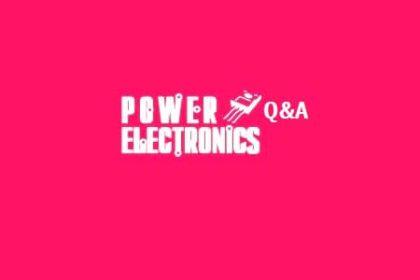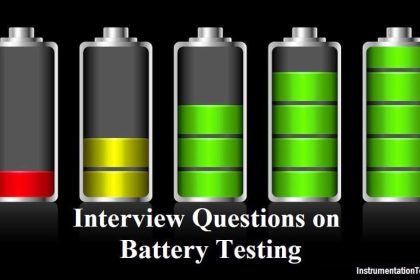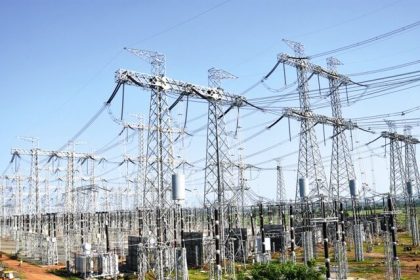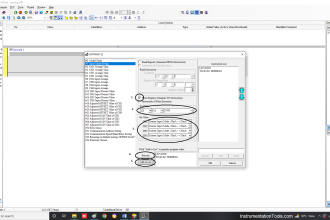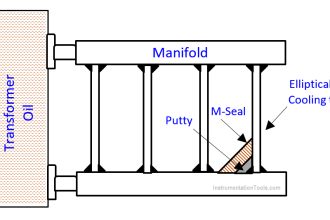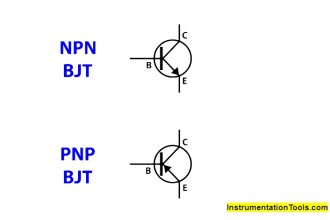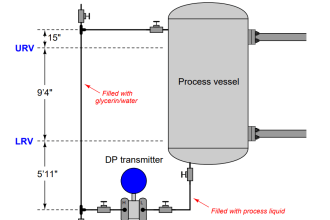How do the new IE efficiency classes compare with the old EFF efficiency classes?
The new IS: 12615-2011 defines the following efficiency classes of low-voltage three phase asynchronous motors in the power range from 0.75 kW to 375 kW.
- IE1 = Standard Efficiency (comparable to EFF2) (only for variable frequency drive application).
- IE2 = High Efficiency (comparable to EFF1)
- IE3 = Premium Efficiency
- IE4 = Super Premium Efficiency
The main difference between the efficiency classes (EFF and IE) lies in the method used to determine them. In a direct comparison of both measuring methods for the same motor, it is expected that the new method of determining efficiency levels will show a reduction in the measured efficiency level for the motor.
For example, an EFF1 motor with a 91.0% efficiency is physically identical to an IE2 motor with 89.8% efficiency.
What motors are in the Scope of the Efficiency Standard?
The efficiency class system specified under IEC 60034-30 is valid for low voltage three phase cage-induction motors with the following specifications:
- Rated voltage up to 1000V
- Rated output between 0.75kW and 375kW
- 2, 4, or 6 poles
- Rated on the basis of continuous duty (S1) or intermittent periodic duty (S3) with a cyclic duration factor of 80% or higher
- Capable of operating direct on-line
- Rated for operating conditions in accordance with IEC 60034-1 (temperature, installation altitude.etc.)
- Motor with feet, flanges and/or shafts with mechanical dimensions different from IEC 60072-1 are covered by this standard.
Why has the efficiency of my motor changed?
The new test standard has been changed to be more accurate and consistent and now uses different test methods so the same motors will have different efficiency figures depending on which test standard is used. Also, IEC 60034 – 2 -1996 and the new 60034-2-1 (2007) have different definitions which are not exactly the same.
This means that the same motor could probably have different efficiency levels under the two standards.
New measuring methods: With the new measuring methods, the additional losses are no longer assumed as fixed percentage values (with 0.5%), but are determined by making the appropriate measurements (IEC 60034-2-1: 2007).
This is the reason that the nominal efficiencies decrease from EFF1 to IE2 and from EFF2 to IE1 – although neither technical nor physical changes have been made to the motors.
- Previously: PLL = 0.5 % of P was added
- Now: PLL = Individual measurement
- PLL = Load dependent additional Losses
As an example, the efficiency values for 3 motors according to the new and the old loss determination methods are shown in the following table:
| Old EFF measuring methods (incl. fixed percentage losses) IEC 60034-2: 1996 50 Hz | New loss determination methods according to IEC 60034-2-1: 2007 50 Hz | |
| 5.5 kW 4-Pole | 89.2 % | 87.7 % |
| 45 kW 4-Pole | 93.9 % | 93.1 % |
| 110 kW 4-Pole | Not Defined | 94.5 % |
What is a slip ring induction motor?
A wound-rotor motor is a type of induction motor where the rotor windings are connected through slip rings to external resistances. Adjusting the resistance allows control of the speed/torque characteristic of the motor.
How does a slip ring work?
Typically, slip ring consists of a stationary graphite or metal contact (brush) which rubs on the outside diameter of a rotating metal ring.
As the metal ring turns, the electric current or signal is conducted through the stationary brush to the metal ring making the connection.
How does a slip ring commutator work?
A split-ring commutator makes the current change direction every half-rotation, whereas a slip-ring commutator merely maintains a connection between the moving rotor and the stationary stator.
What is slip in an induction motor?
SLIP is the difference between the synchronous speed of the magnetic field and the shaft rotating speed and would be some number of RPM or frequency.
The slip increases with an increasing load, thus providing a greater torque. Speed of the rotor of an induction motor is always less than its synchronous speed.
What is the difference between commutator ring and slip ring?
A split-ring commutator makes the current change direction every half-rotation, whereas a slip-ring commutator merely maintains a connection between the moving rotor and the stationary stator.”
What is the meaning of slip frequency?
Slip refers to the difference between the shaft rotating speed and the magnetic field’s synchronous speed, which is measured in frequency or RPM.
The percent slip is a method that helps calculate an electric motor’s speed performance. A higher load also increases the slip and the amount of torque produced.
Why slip is never zero in an induction motor?
Torque developed by induction motor is proportional to the slip. At synchronous speed, slip is zero and hence torque developed by the motor is zero.
In case of ideal motor having zero friction and zero losses, motor can rotate at synchronous speed, because motor need not develop any torque to sustain rotation.
Why slip ring induction motor has high starting torque?
The complication and maintenance associated with brushes and slip rings is a disadvantage of the wound rotor as compared to the simple squirrel cage rotor.
This motor is suited for starting high inertial loads. A high starting resistance makes the high pull out torque available at zero speed.
What is the difference between slip ring and squirrel cage induction motor?
Both are the types of Asynchronous machines(Induction Machines), difference is that in Slip ring we can change the starting torque by simply varying the External resistance connected to rotor, this is not possible in case of squirrel cage induction motor.
What is the motor starter?
A Starter is a device that controls the use of electrical power to equipment, usually a motor. As the name implies, starters “start” motors.
They can also stop them, reverse them, and protect them. Starters are made from two building blocks, Contactors and Overload Protection.
How does a soft start motor work?
Solid state soft starters use semiconductor devices to temporarily reduce the motor terminal voltage. This provides control of the motor current to reduce inrush and limit shaft torque.
The control is based on controlling the motor terminal voltage on two or three phases. By limiting the voltage to the motor, a reduced torque is provided to start the load more gradually.
What are the benefits of choosing a soft starter?
Soft starters are often the more economical choice for applications that only require speed and torque control during motor startup.
Additionally, they are often the ideal solution for applications where space is a concern, as they usually take up less space than comparable variable frequency drives.
How does a direct online starter work?
Different types of starters. The simplest form of motor starter for the induction motor is the Direct On Line starter.
The DOL starter consist a MCCB or Circuit Breaker, Contactor and an overload relay for protection.
What is meant by auto transformer starter?
The taps on the auto transformer limit the voltage applied to the motor to 50%, 65% or 80% of the nominal voltage… The difference between line and motor current is due to the transformer in the circuit.
The lower line current is the reason the auto transformer starter is a very popular type of reduced-voltage starter.
What is a star delta motor starter?
The Star Delta Starter is a very common type of starter and is used extensively as compared to the other type of starting methods of the induction motor.
A star delta is used for a cage motor designed to run normally on the delta connected stator winding.
Why do we start motor with star delta starter?
In a (squirrel) cage induction motor, the starter is used only to decrease the input voltage to the motor so as to decrease the starting current. It is T.P.D.T switch used to first start the motor with the winding connected in star and then switch for delta connection in running position.
Why is the starting current of induction motor is high?
When 3 phase voltage applied across the stator winding for starting of induction motor, high inrush currents magnetize the air gap between the stator and rotor.
An induces emf is generated in the rotor windings of the induction motor because of the rotating magnetic field.
What is meant by inrush current?
Inrush current, input surge current or switch-on surge is the maximum, instantaneous input current drawn by an electrical device when first turned on.
Alternating current electric motors and transformers may draw several times their normal full-load current when first energized, for a few cycles of the input waveform.
What is a star connection?
In STAR connection, the starting or finishing ends (Similar ends) of three phases(coils) are connected together to form the neutral point.
A common wire is taken out from the neutral point which is called Neutral.There is no such connection in Delta network. The Line voltage is root three times the phase voltage.
Why most of the induction motors are Delta connected?
The torque developed is reduced because it is proportional to the square of the stator phase voltage in an induction motor… Generally three phase induction motor having rating of 5 hp and above have delta connected stator winding and therefore the entire line voltage is applied to the stator phase windings.
What is Torque in electrical motors?
Mechanical or load torque is proportional to the product of force and distance. Motor current varies in relation to the amount of load torque applied.
When a motor is running in steady state, the armature current is constant, and the electrical torque is equal and opposite of the mechanical torque.
What is locked rotor torque?
Locked Rotor or Starting Torque. The Locked Rotor Torque or Starting Torque is the torque an electrical motor develops when starting at zero speed.
A high Starting Torque is more important for application or machines hard to start – like positive displacement pumps, cranes etc.
What is rated torque of a motor?
Rated torque is the maximum continuous torque available at the design speed that allows the motor to do the work without overheating.
Starting torque is the torque the motor delivers at zero speed. i.e. startup. It is also called the stall torque.
What is the starting torque?
Starting torque is the amount required to overcome the inertia of a standstill. Pull-up torque is the minimum torque generated by a motor as it accelerates from standstill to operating speed.
If a motor’s pull-up torque is less than that required by its application load, the motor will overheat and eventually stall.
What is the induction motor pull out torque?
In synchronous motors the value of pull-out torque is a maximum value of torque which allows a synchronous motor to remain in synchronism without “pulling out” of step or synchronism… Breakdown torque for an induction motor.
What is the breakdown torque?
Pull Up Torque (PUT) is the minimum torque developed by the motor as it accelerates from standstill to the speed at which breakdown torque occurs.
Break Down Torque (BDT) is the maximum torque that the motor is capable of developing.
What is the unit of torque?
For metric SI units, power is watts, torque is newton metres and angular speed is radians per second (not rpm and not revolutions per second).
Also, the unit newton metre is dimensionally equivalent to the joule, which is the unit of energy.
Why induction motor has high starting torque?
The complication and maintenance associated with brushes and slip rings is a disadvantage of the wound rotor as compared to the simple squirrel cage rotor.
This motor is suited for starting high inertial loads. A high starting resistance makes the high pull out torque available at zero speed.
Why no load test is performed in induction motor?
Rotor copper loss at no load is very less that its value is negligible. Small current is required to produce adequate torque.
This test is also well-known as running light test. This test is used to evaluate the resistance and impedance of the magnetizing path of induction motor.
What is locked rotor current of induction motor?
When AC motors are started with full voltage (Across-the-Line Starting), they draw line amperage 300% to 600% greater than their full load running current.
The magnitude of the “inrush current” (also called locked rotor amps or LRA) is determined by motor horsepower and design characteristics.
